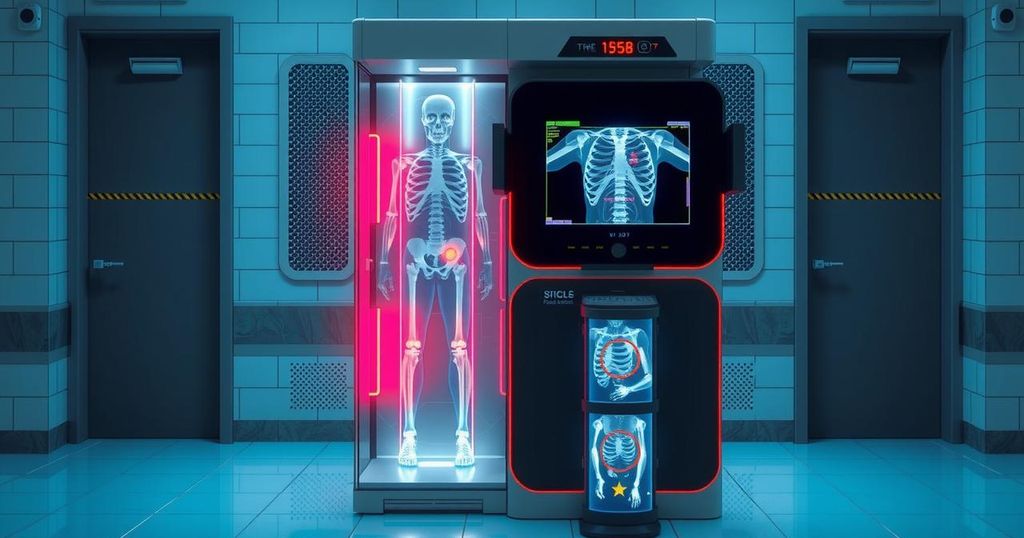AI-Powered X-Ray Screening Revolutionizes Prison Security
LINEV Systems is transforming prison security through cutting-edge transmission X-ray scanners equipped with AI. These innovations effectively detect contraband hidden in inmates’ bodies, offering a solution to challenges faced by older scanning technology. With significant deployments across the US and UK, results indicate a marked improvement in safety and reduced violence.
Conroe, Texas – When it comes to security in prisons, it’s way more than just having locked doors and tall fences. Each day, it’s like fighting ghosts – unseen threats that hide deep within inmates’ bodies, whether it’s drugs, weapons, or even mobile phones. Regular visual checks or millimeter-wave scanners fail to catch these hidden dangers, and that’s where transmission X-ray body scanners step in, providing critical insights beneath the skin’s surface.
These transmission X-ray systems aren’t just high-tech toys for prisons to show off; they are essential tools that can identify contraband that is swallowed, inserted, or tucked away in oral cavities. The list of potential intercepted items is alarming: narcotics, mobile phones, sharp weapons, lighters and, yes, even cash. All these items pose serious risks, enabling ongoing criminal activities and shaking the foundation of control within correctional settings.
Let’s talk about why those millimeter-wave and backscatter systems aren’t cutting it anymore. They were originally designed for detecting objects hidden under clothing. But inside bodies? That’s a different game altogether. These older systems lack the depth needed to spot risks hidden away, causing them to be mostly retired from prison use. The term “full-body personnel screening” sounds nice but isn’t based on current realities. In today’s world, only penetrating X-ray systems truly deliver on that promise.
Enter LINEV Systems US Inc. (or LINEV for short), which had the vision to be the first to patent and commercialize this groundbreaking technology. They’ve redefined internal contraband detection in correctional facilities. LINEV’s full range of body scanners – whether portable or stationary – can produce imaging quality that’s almost on par with medical-grade X-rays. This clarity helps operators identify potential threats regardless of where or how they are concealed.
But there’s even more to the story. LINEV has also rolled out two proprietary AI platforms known as DruGuard and A-EYE. These aren’t just fancy add-ons; they are core to the company’s CLEARPASS system, creating a smart engine that aids operators in real-time. From spotting hidden objects to classifying them by type, these systems enhance the effectiveness of screening by allowing operators to focus their efforts where they matter most.
These tools have shown remarkable success across the United States. More than 1,000 transmission X-ray body scanners have been deployed in 42 states, averaging over 400 installations a year. They’re not just improving security; they’re potentially saving lives by preventing overdose deaths among inmates. The costs of these scanners are recouped within the first year of use, making them a sound investment for institutions concerned about safety.
Turning our gaze across the ocean to the UK, results speak volumes. Since they began deploying their own scanners in July 2020, over 46,900 suspected contraband items have been detected in the men’s closed prisons. This tech played a crucial role in the government’s “10 Prisons Project,” which led to a 16% drop in prison violence and a staggering 50% decrease in positive drug tests. You can see just how impactful automated threat detection can be.
Now, it’s worth noting that screening humans is significantly tougher than scanning bags or luggage. Unlike luggage scanning, where items rest against a clear backdrop, human bodies are filled with bones and tissues that can obscure hidden items. Factors like height or even digestive issues can influence how images appear, making it a challenge—even for seasoned professionals. That’s why having AI in the mix is more crucial than ever, especially in such complex environments.
The CLEARPASS system continues to evolve with A-EYE integrated at an architectural level, ensuring it recognizes threats efficiently with little radiation exposure. From the first generation to the updated CLEARPASS C.I., both systems now share the same AI capabilities, ensuring an adaptive and robust response to ever-changing threats in prison settings.
With the likes of LINEV leading in this sector, it’s clear that they’re not just keeping up, but setting the pace. Their systems are built adhering to strict industry standards and uphold a commitment to enhancing security, with both corrections and border protection in mind.
At the end of the day, it’s all about looking beyond what meets the eye. The introduction of CLEARPASS powered by cognitive AI is not merely a technical upgrade; it represents a transformative shift towards safer correctional practices, eliminating human error and enhancing operational reliability. What LINEV is offering isn’t just the future; it’s a real solution that’s already in action today.
In summary, the deployment of transmission X-ray body scanners in correctional facilities, spearheaded by LINEV Systems, marks a significant advancement in prison security. These systems, backed by AI capabilities through DruGuard and A-EYE, provide essential detection of contraband concealed within bodies—proving crucial in maintaining safety. With demonstrable reductions in violence and drug availability in prisons, it’s clear that technology like this not only reshapes operational safety but also pushes towards a more secure environment for all involved.
Original Source: www.corrections1.com




Post Comment